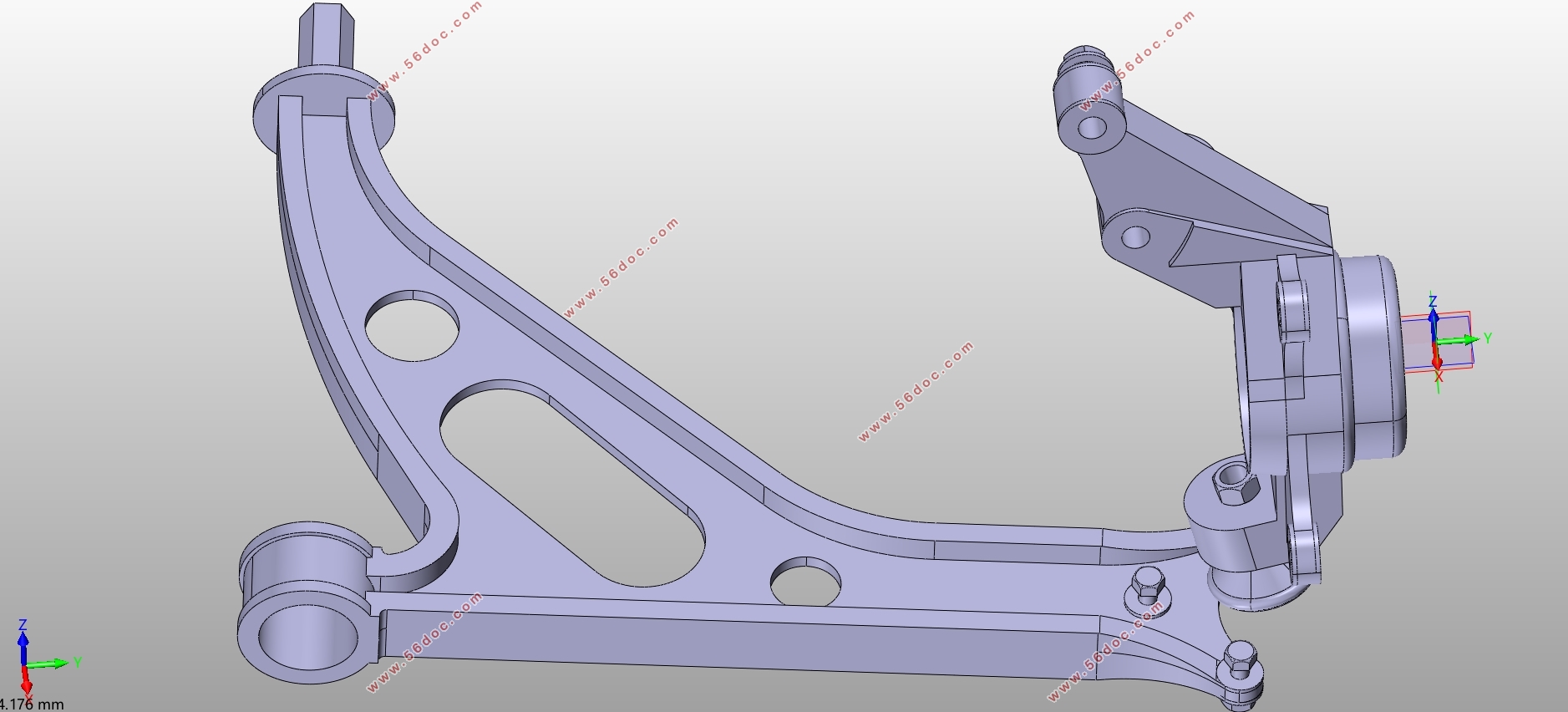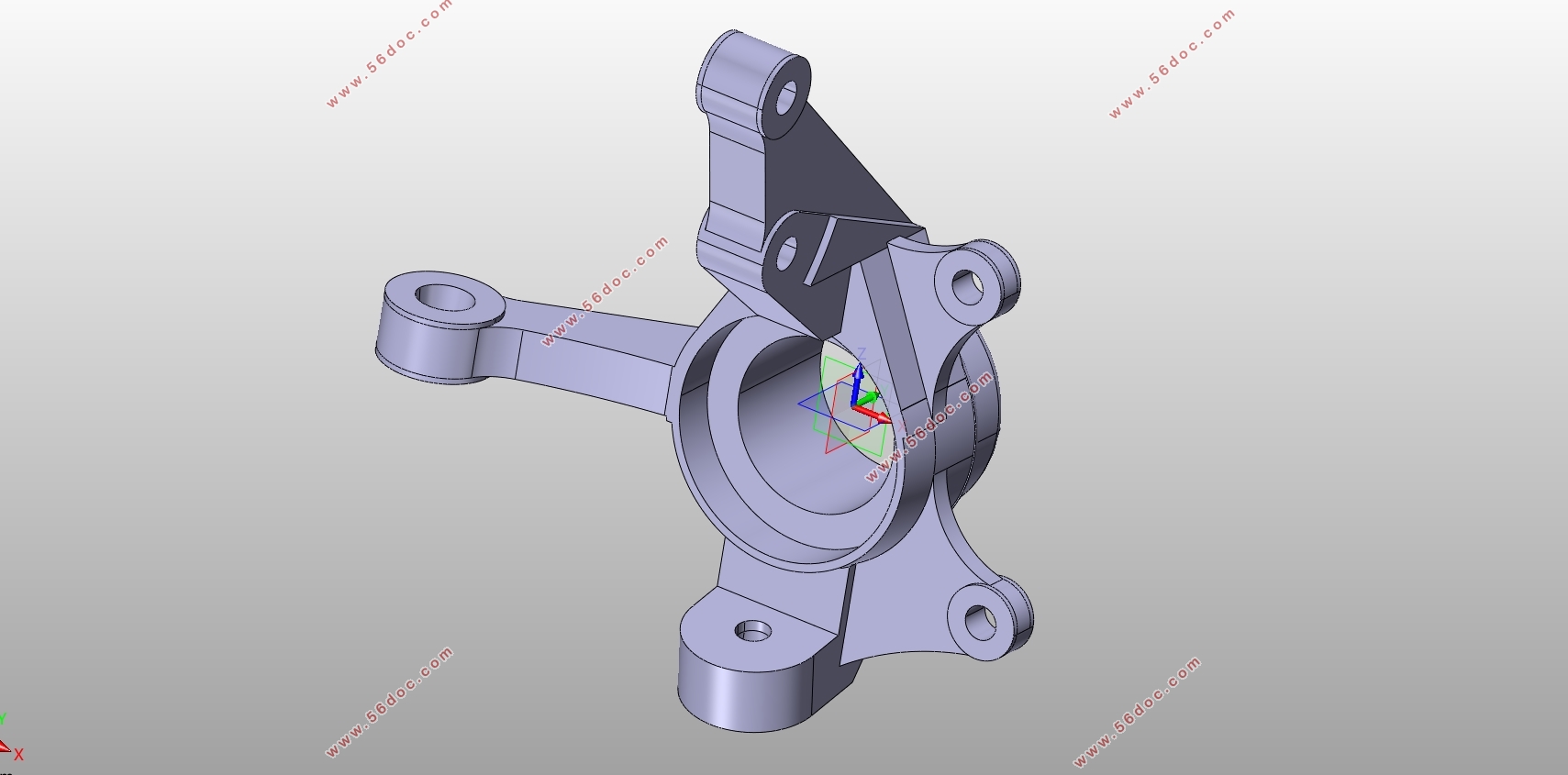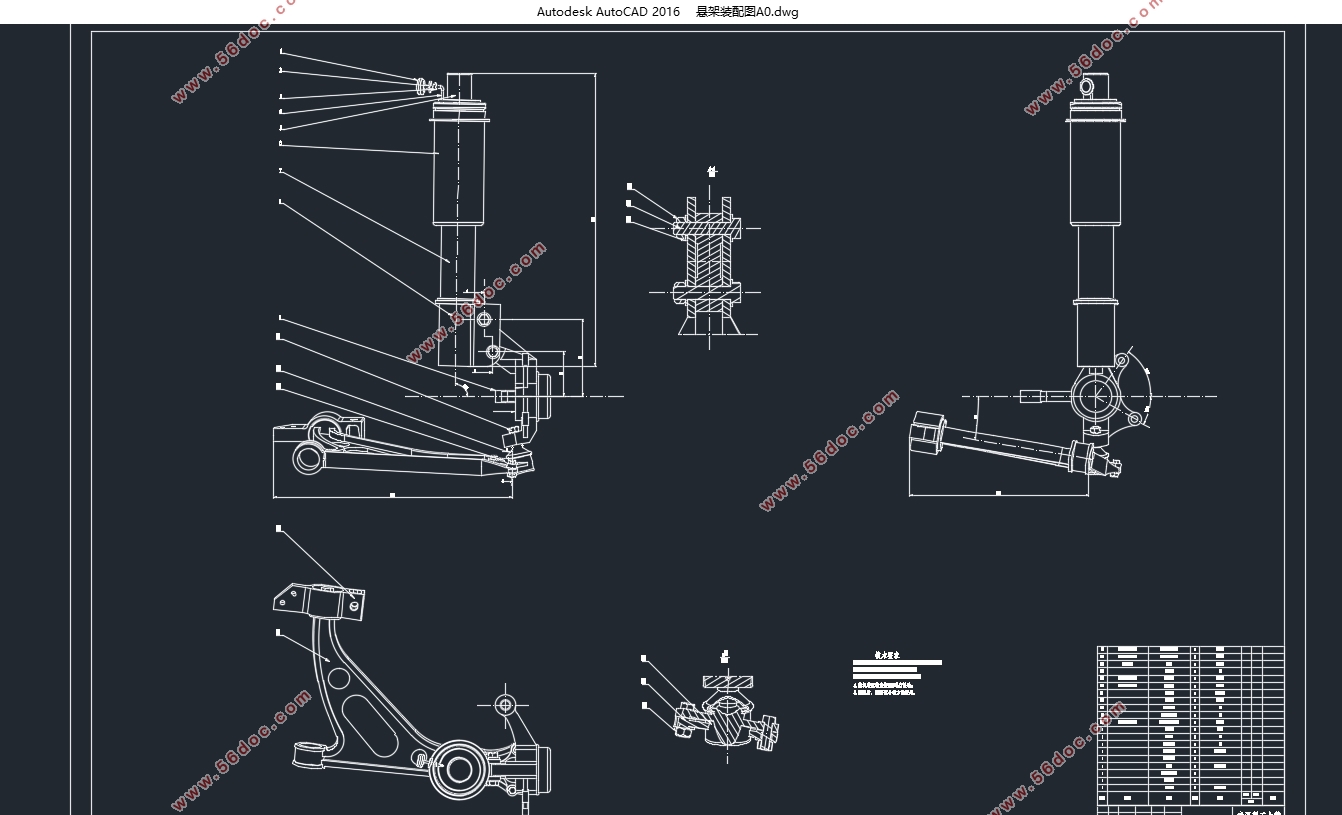汽车主动悬架系统设计与仿真研究(含CAD图,CATIA三维图)(任务书,开题报告,文献摘要,外文翻译,论文说明书17000字,CAD图5张,CATIA三维图)
摘 要
悬架是汽车底盘行驶系统中的关键部分之一,它的性能对汽车的行驶平顺性、操纵稳定性和安全性都有着举足轻重的影响。主动悬架能够通过调节悬架的阻尼或刚度有效地提高汽车的行驶平顺性和操纵稳定性,因此成为了各国研究的重点方向。
本文从设计一个主动空气悬架系统出发,主要对一体式空气弹簧减振器进行了研究和设计,本文设计的一体式空气弹簧减振器采用同轴一体式结构,能够实现三档阻尼可调,其刚度能够实现“软”、“硬”调节。主要内容如下:
首先,对空气弹簧的特点进行了介绍,并对空气弹簧的刚度和频率特性进行了计算分析,分析了刚度可变空气弹簧的原理。之后着重设计了一种能够实现刚度和阻尼联动调节的一体式空气弹簧减振器,对其工作原理进行了分析研究,并对其相关参数进行了设计计算,使用Catia制作了该减振器的三维模型。
接下来,建立了只考虑一体式空气弹簧刚度特性的双气室空气弹簧模型,基于流体力学相关理论知识,应用Matlab/Simulink软件建立了减振器总成的刚度仿真模型,进而得到了减振器的总成的刚度特性曲线。该曲线表明减振器总成具备良好的非线性刚度特性,并且可以实现“软”、“硬”刚度的调节。
最后,基于建立的悬架二自由度动力学模型和路面输入模型,我们采用模糊控制理论,应用Matlab/Simulink软件对该一体式空气弹簧减振器进行仿真分析,得到主动空气悬架与被动悬架性能参数的对比曲线,结果表明本文设计的模糊控制策略是行之有效的,该一体式空气弹簧减振器能够有效提高悬架的性能。
关键词:主动空气悬架;一体式空气弹簧减振器;模糊控制;Simulink仿真分析
Abstract
Suspension is one of the key parts of the car chassis driving system,its performance has a significant impact on the car’s ride comfort, handling stability and safety. Active suspension can effectively improve the car's ride comfort and handling stability by adjusting the damping or the stiffness of the suspension.Thus they have become the focus of national research.
In this paper, we start from the design of an active air suspension system, mainly study and design the integral air spring shock absorber. The integral air spring shock absorber has coaxial one-piece structure, can achieve three adjustable damping, Its stiffness can achieve‘soft’, ‘hard’ regulation. The main contents are as follows:
Firstly, the characteristics of the air spring are introduced, and the stiffness and frequency characteristics of the air spring are calculated and analyzed. The principle of the variable air spring is analyzed. Then, the integral air spring shockabsorber which can realize the adjustment of stiffness and damping is designed, and its working principle is analyzed and studied. The relevant parameters are designed and calculated, and use Catia to build the three-dimensional model of the shock absorber.
Next, based on the knowledge of fluid mechanics, the stiffness simulation model of the shock absorber assembly is established by using Matlab/Simulink software, and then the vibration model of the shock absorber is obtained. Then, the stiffness model of the shock absorber is established.And the stiffness characteristic curve is obtained. The curve shows that the shock absorber assembly has good nonlinear stiffness characteristics and can be adjusted for ‘soft’ and ‘hard’ stiffness.
Finally, based on the established two-degree-of-freedom dynamic model and the pavement input model, the fuzzy control theory is used to simulate the integral air spring shock absorber with Matlab/Simulink software, and comparethe performance of the active air suspension and passive suspension. The results show that the fuzzy control strategy is effective, and the integral air spring shock absorber can effectively improve the performance of the suspension.
Key words: active air suspension; integral air spring shock absorber; fuzzy control; Simulink simulation analysis







目 录
摘要 I
Abstract II
第1章 绪论 1
1.1 研究目的和意义 1
1.2 悬架系统介绍 1
1.3 主动空气悬架系统简介 2
1.3.1 主动空气悬架系统的特点 2
1.3.2 主动空气系统的组成 2
1.4 国内外电控空气悬架的研究状况 3
1.4.1 国外电控空气悬架的研究状况 3
1.4.2 国内电控空气悬架系统研究现状 4
1.5 研究设计内容 4
第2章 空气悬架空气弹簧特性分析 5
2.1空气弹簧的简介 5
2.1.1 空气弹簧的结构 5
2.1.2 空气弹簧的特点 5
2.1.3 空气弹簧的分类 6
2.2 空气弹簧刚度和频率特性的分析计算 6
2.2.1 空气弹簧刚度计算 6
2.2.2 空气弹簧频率的计算分析 8
2.3 刚度可变空气弹簧的原理 8
2.4 本章小结 9
第3章 一体式空气弹簧减振器的设计及工作原理 10
3.1 一体式空气弹簧减振器的结构 10
3.1.1 单筒充气式减振器 10
3.1.2空气弹簧 11
3.2 一体式空气弹簧减振器的工作原理 12
3.2.1 减振器工作原理 12
3.2.2空气弹簧工作原理 14
3.3 一体式空气弹簧减振器的相关参数设计 14
3.3.1 减振器的设计 14
3.3.2 活塞杆强度校核 16
3.3.3 空气弹簧的选择 17
3.4 本章小结 17
第4章 一体式空气弹簧减振器刚度特性模型建立 18
4.1双气室空气弹簧物理模型的建立 18
4.2气室内气体压力变化特性的计算和分析 19
4.2.1 节流口流量的计算分析 19
4.2.2 气室内压强的计算 20
4.2.3 一体式空气弹簧减振器的弹性力 21
4.3 一体式空气弹簧减振器刚度模型 22
4.4 本章小结 23
第5章 电控空气悬架系统的仿真和分析 24
5.1电控空气悬架控制器的设计 24
5.1.1模糊控制原理简介 24
5.1.2 模糊控制器的输入和输出变量的确定 24
5.1.3 变量模糊化条件的定义 25
5.1.4 建立模糊控制规则 25
5.2 二自由度四分之一汽车动力学模型 27
5.3 二自由度1/4汽车动力学非线性数学模型 27
5.3.1 建立路面模型 27
5.3.2 空气悬架汽车动力学模型 30
5.4 仿真结果分析 33
5.5 本章小结 38
第6章 总结与展望 39
6.1 全文总结 39
6.2 研究展望 39
参考文献 40
附录 41
致谢 44
|















